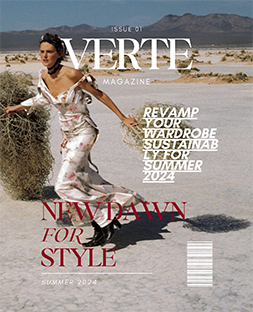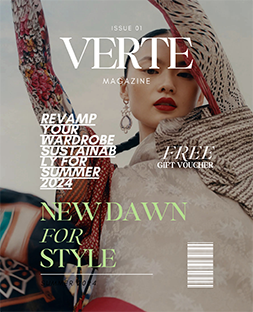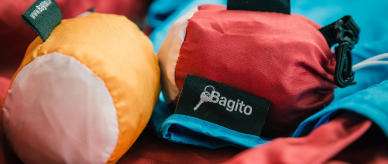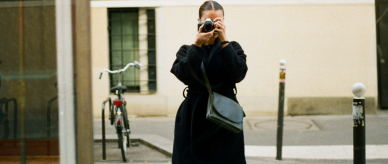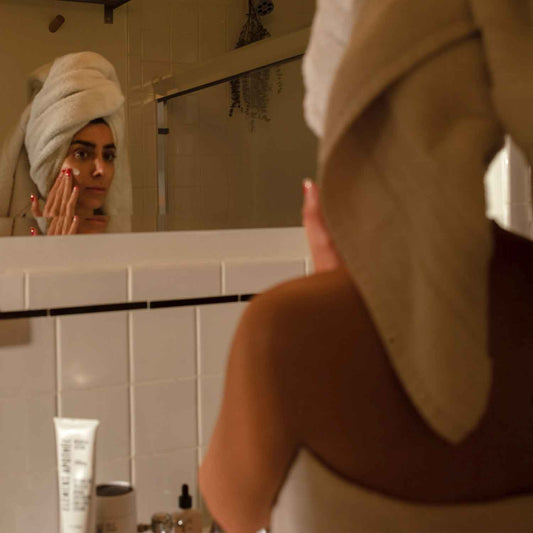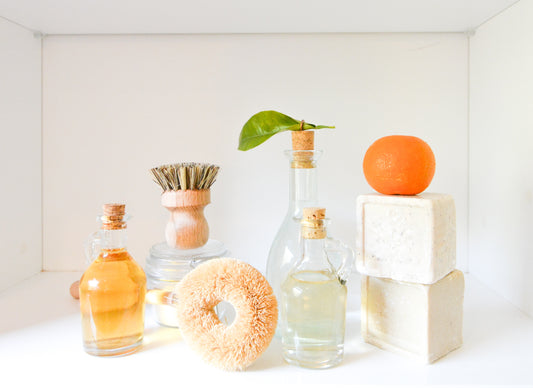In a world where every influencer seems to wear the same trendy outfits, finding your personal style can feel like a daunting task. Do you find inspiration when you look through your closet, or does it make you anxious about clutter and unworn pieces? If you’re aiming for your dream wardrobe, consider a sustainable approach: identifying your personal style.
Here’s the thing: Fast fashion and hype culture push us to value fleeting looks over a cohesive wardrobe, and moments over longevity. But true personal style offers something far more rewarding. It’s an investment in yourself, not in fleeting trends. In today’s fashion scene, the actual wardrobe often gets overlooked. Many people borrow rather than own their clothes, chasing the novelty of newness instead of cultivating a wardrobe they truly love. We've been conditioned to believe that our clothing can only bring joy the first time we wear it. But you can train yourself to love something every time you put it on.
For me, the real test is: can I wear it many years to come and still be happy? This brings us to a tricky question: If you care about sustainability in fashion, yet love fashion itself, how do you balance these two? Doesn’t committing to sustainability eventually mean giving up on fashion? This is where certain timeless brands come in—brands like The Row, Engineered Garments, and Evan Kinori. These brands don’t chase trends, which encourages you to buy thoughtfully and keep pieces for longer.
So, while one approach is to stop buying into fast fashion and streetwear trends, another is to rethink how you buy and wear clothes. Is your style strong enough to not care if Supreme fanny packs are no longer cool? Can your suiting or knitwear hold its own?
Both men's and women's fashion have long fetishized newness, but this obsession feels outdated. The fantasy world of high fashion—like New York Fashion Week—spends enormous sums to project legitimacy. Yet, designers like Rachel Comey, Marine Serre, Craig Green, and Jonathan Anderson are asking more meaningful questions about what it means to dress in today's world. Fashion should help you build your identity and confidence, not diminish your individuality.
The Benefits of Finding Your Personal Style
Understanding your personal style helps you become content with what you have, instead of buying into the idea that you are never enough – an idea that the fashion industry thrives on. In many ways, slow fashion is a personal journey that calls on you to reconnect with your clothes.
First and foremost, developing a sense of personal style allows you to hop off the hamster wheel of endless trend cycles by defining what style means for you, instead of what the media says you should be wearing. As soon as we dictate what we wear, we dismantle trends. In turn, this helps you buy with more intention and more mindfully, because you have understood what items make you feel good and confident.
This can make you feel lighter and freer, as you learn to express yourself on your own terms. And, being a more focused shopper is likely to save you time and money in the long run! This also means you are creating less waste because you are not buying unnecessarily, impulsively, and overconsuming for the sake of trends that come and go at a rapid pace. Focusing on style instead of trends allows you to remind yourself of your creative potential.
Practicing and cultivating this kind of creativity is so important because in the trend-focused, fast-paced fashion industry that we exist in this intuitive skill has been suppressed. Embracing and celebrating personal style also encourages the idea that slow fashion doesn’t have to look a certain way or look the same for everyone. This movement is not accompanied by a prescriptive aesthetic, but rather on the approach that you take to relating to, acquiring, and appreciating whatever clothes you choose to express yourself in.
Finding Your Personal Style

Go Through Your Closet - Start by going through your wardrobe piece by piece. Identify what you love, what you wear often, and what just takes up space. This isn't just a decluttering exercise; it’s a way to engage intimately with your clothing. Consider why you like or dislike each piece. This process shouldn’t be rushed. Wear your clothes and keep in mind the 4 p.m. test: what keeps you excited throughout the day?
Try to Identify Your Style in Three Words - Ask yourself how you would describe your style. How would you want others to describe your style? How do you want your style to make you feel? Summarize these questions into three keywords that you can always reference back to. Having these keywords allows you to buy with more intention because you can look at a new item and assess whether it fits into the style framework you have created for yourself. It’s normal for these words to evolve as your style evolves, so don’t worry too much about perfecting your words right off the bat. Pick your three words, and try them out for a few weeks to see how they feel. You can always change them later!
What Happens if My Personal Style Changes Over Time? Finding your personal style is a journey. It’s not something you can figure out in one day. As we move through different life stages and our lifestyles shift, so do our tastes, aspirations, and preferences. And, as you get to know yourself better, you will get to know your style better too. When you feel a shift in style coming on, it is important to sit with yourself and consider your intentions. Do you want to invest in new (or new-to-you) wardrobe items because they align better with your current life stage and avenues of expression? Or is it just because that item is trending and you don’t want to miss out? Try not to buy into trends if they don’t enhance and work with the closet you already have. While the constant evolution of self and style is entirely normal, we can still find ways to honor these natural changes while prioritizing sustainability and mindfully updating our style and aesthetic.
Find Inspiration - Pinterest is perfect for this. Save looks you love to a board, and let the algorithm show you more of what you like. This isn’t about copying trends but about identifying recurring themes that resonate with you. You can also have a magazine collage session with friends to gather inspiration from colors, patterns, and styles you love.
Work on Building Your Wardrobe Staples - Staples are not the same for everyone (maximalists can have staples too!) but they are at the core of any wardrobe. A wardrobe staple is not necessarily the most simplified version of a garment, but rather an item that fits with your wardrobe, you’d wear often, and it would allow you to wear your other wardrobe items more too. You don’t need to search for a prescriptive list of “wardrobe staples”, but rather reflect on your findings from your closet audit or wardrobe ethnography to figure out what pieces are most foundational for you.
Create a Wishlist - You can also create a wishlist of pieces you are coveting. Wishlists help you make more thoughtful and considered investment purchases, instead of impulse purchases. This is because each item is on your wishlist for a reason. You take the time to reflect on it, save up for it, and look out for it. By the time you buy it, you have already been looking forward to it, and have plenty of styling ideas! You can use wishlists for thrifting or for investing in new items.
Shop Secondhand - Thrifting allows you to notice what styles and types of clothing you naturally gravitate towards. Thrift stores don’t have mannequins, big posters, and catalogs, glaring at you as you walk around and showing you how to style the garments. So, the items you are drawn to are more likely to reflect your personal style. Plus, thrifting is a much less wasteful way of shopping, because you are repurposing preloved clothes. Check out thrift and consignment stores near you or check out this guide to online secondhand stores.
Avoid Impulsive Buys - Keep a running list of pieces you’re on the hunt for. This helps you shop with intention and avoid unnecessary purchases. Apps like Depop and Poshmark let you save items to revisit later, reducing the risk of impulsive buying.
Borrow Clothes - Borrowing from friends or using clothing rental services like Style Lend or Rent the Runway allows you to experiment with styles without commitment. This is especially useful for special events or trying out new looks.
Buy Fewer Clothes and Value What You Buy - Buy clothes you know you will wear many times because they look good and fit well. With carefully chosen clothes, you can mix and match items to create many different looks. Fewer, better-made clothes with the right accessories can give you a more sophisticated and stylish look than volumes of cheaper clothing.
Invest Only in Clothes You Really Like and Need - Consider not what is being pushed at you by fashion designers but instead look at your own style and what you want to communicate. Before you buy a new piece of clothing, consider if you have a similar piece in your wardrobe already.
Learn to Sew - Knowing how to sew or modify your clothes opens up endless possibilities for personalization . You can adjust pieces to better fit your style, making secondhand shopping even more versatile. Whether it's adding a patch, taking in a seam, or completely transforming an item, sewing empowers you to make your wardrobe truly unique and sustainable.
Shop Sustainable Brands - Choose ethical brands that care about the environment, pay their workers fairly, and are transparent across their entire supply chain – not just one part. Many companies promote certain clothing lines as being made with renewable materials but still use unethical labor practices. Make sure to do your research on a brand before you buy from them. Websites like Verte Mode offer a marketplace featuring wonderful sustainable brands with various price points, from designer to artisan-made fashion pieces.
Shop for Quality Over Quantity - Higher quality pieces often last longer. Check the workmanship of your clothing by examining seams, zippers, and the overall construction. Shop with durability in mind, even if it is somewhat more costly. Investing in well-made clothes will save you money in the long run by not having to keep replacing items. Verte Mode’s entire collection has been hand-selected by verifying materials from sourcing and manufacturing to ensure quality.
Look for Certifications - It is important to keep an eye out for certifications that prove clothes are made sustainably and ethically. Certifications like Fair Trade, GOTS (Global Organic Textile Standard), and OEKO-TEX ensure that the clothing you purchase meets high standards for environmental and social responsibility. Verte Mode’s sustainability analysts vet each brand, including looking at certifications to ensure sustainable and ethical practices.
The Journey of Personal Style
Identifying your personal style is a journey for everyone, not just the fashion-obsessed. It helps you curate a wardrobe that reflects your individuality and promotes mindful shopping. By defining where trends end and your style begins, you not only enhance your wardrobe but also discover more about yourself. So, embark on this journey and find joy in your unique fashion identity.
Fashion should be an extension of who you are, not a reflection of fleeting trends. When you develop a personal style, you’re making a statement about your values and individuality. This journey is about more than just clothing; it’s about self-expression and sustainability. So take your time, enjoy the process, and embrace the creativity and freedom that come with truly knowing your style.




